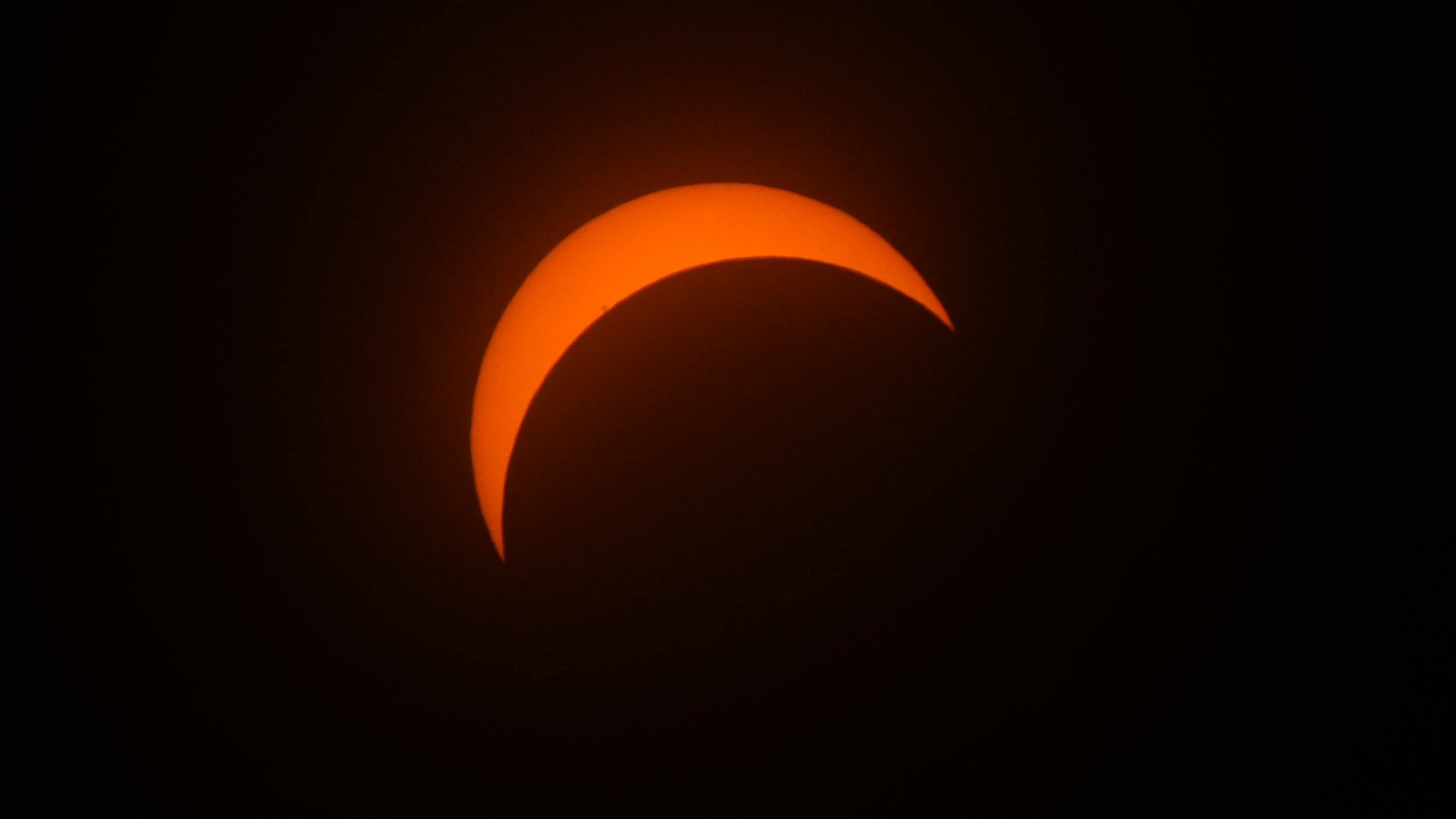Solar eclipse

A solar eclipse is one of the most dazzling celestial phenomena that you can experience from Earth. It occurs when Earth, the moon and sun are aligned on the same plane, with the moon passing in front of the sun to cast a shadow on the planet below.
During a total solar eclipse, the moon completely covers the sun, which results in a period of "totality," when the moon completely blocks the light from the sun. This causes evening-like darkness during the daytime, as the center of the moon's dark shadow falls over Earth. Viewers do not experience totality during a partial solar eclipse, when the moon only blocks a portion of the sun's disk.
Latest about Solar eclipse

Watch moon's shadow race across US during 2024 total solar eclipse
By Harry Baker published
Earth from space Multiple spacecraft captured the moon's shadow sweeping across North America at more than 1,500 mph during the 2024 total solar eclipse, as millions of people looked up to witness totality.

Staring at the March 29 solar eclipse can cause eye damage in seconds — and you won’t even feel it happening
By Emily Cooke published
Experts explain damage that can happen to your eyes if you stare at the partial eclipse without using adequate protection.

March 29 solar eclipse: Don't miss the rare sunrise solar eclipse over North America tomorrow
By Jamie Carter last updated
A dramatic sunrise solar eclipse tomorrow (March 29) will be the first one visible in North America since April 2024. Here's how to get the best view of the partial eclipse before it ends.

Eclipse map: What will tomorrow's solar eclipse look like from your state?
By Jess Thomson last updated
A NASA map shows the regions across the Northern Hemisphere where tomorrow's partial solar eclipse will be visible, how much of the sun will be blocked out, and what time the eclipse will hit its peak.

Which states will see the solar eclipse tomorrow — and which will see a 'double sunrise'?
By Jamie Carter last updated
Tomorrow, March 29, North America will witness its first solar eclipse since April 2024. Here are the 13 states where you'll be able to see it.

What time does the solar eclipse start tomorrow?
By Jamie Carter last updated
Tomorrow (March 29, 2025), a deep partial solar eclipse will be seen at sunrise in North America and midmorning in Europe. Here's what time to watch the celestial spectacle unfold.

How to watch tomorrow's solar eclipse from anywhere on Earth
By Brandon Specktor last updated
A rare sunrise solar eclipse will be visible from 13 U.S. states tomorrow (March 29), as well as locations in Canada and Europe. Here's how to watch for free online, no matter where you are.

Best solar viewing gear 2025: Get prepared for the partial solar eclipse on March 29
By Gemma Lavender published
With the upcoming partial solar eclipse on March 29, here are our top recommendations of solar viewing gear for getting the very best views safely, whatever your budget.
Sign up for the Live Science daily newsletter now
Get the world’s most fascinating discoveries delivered straight to your inbox.


